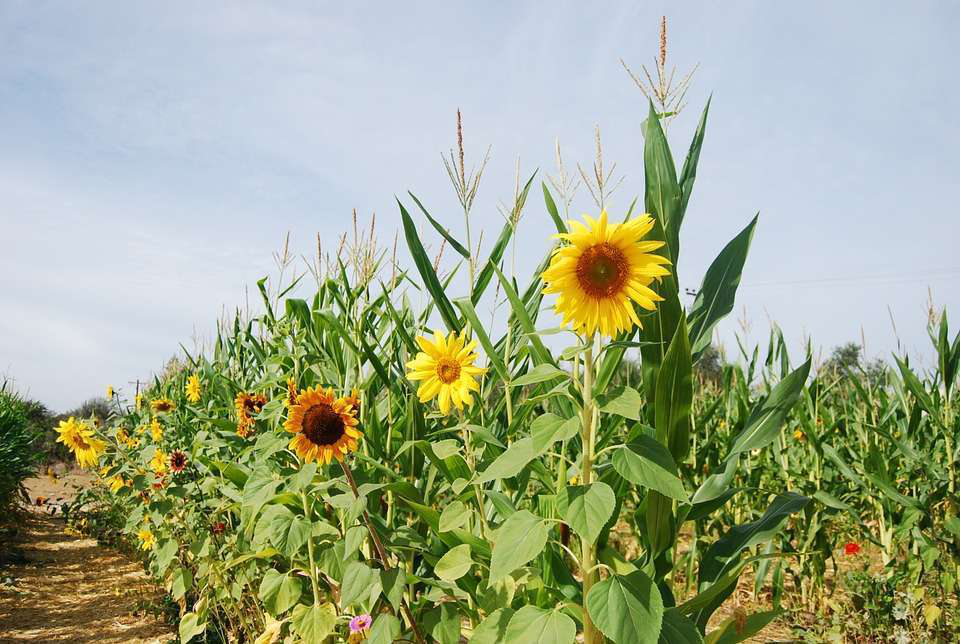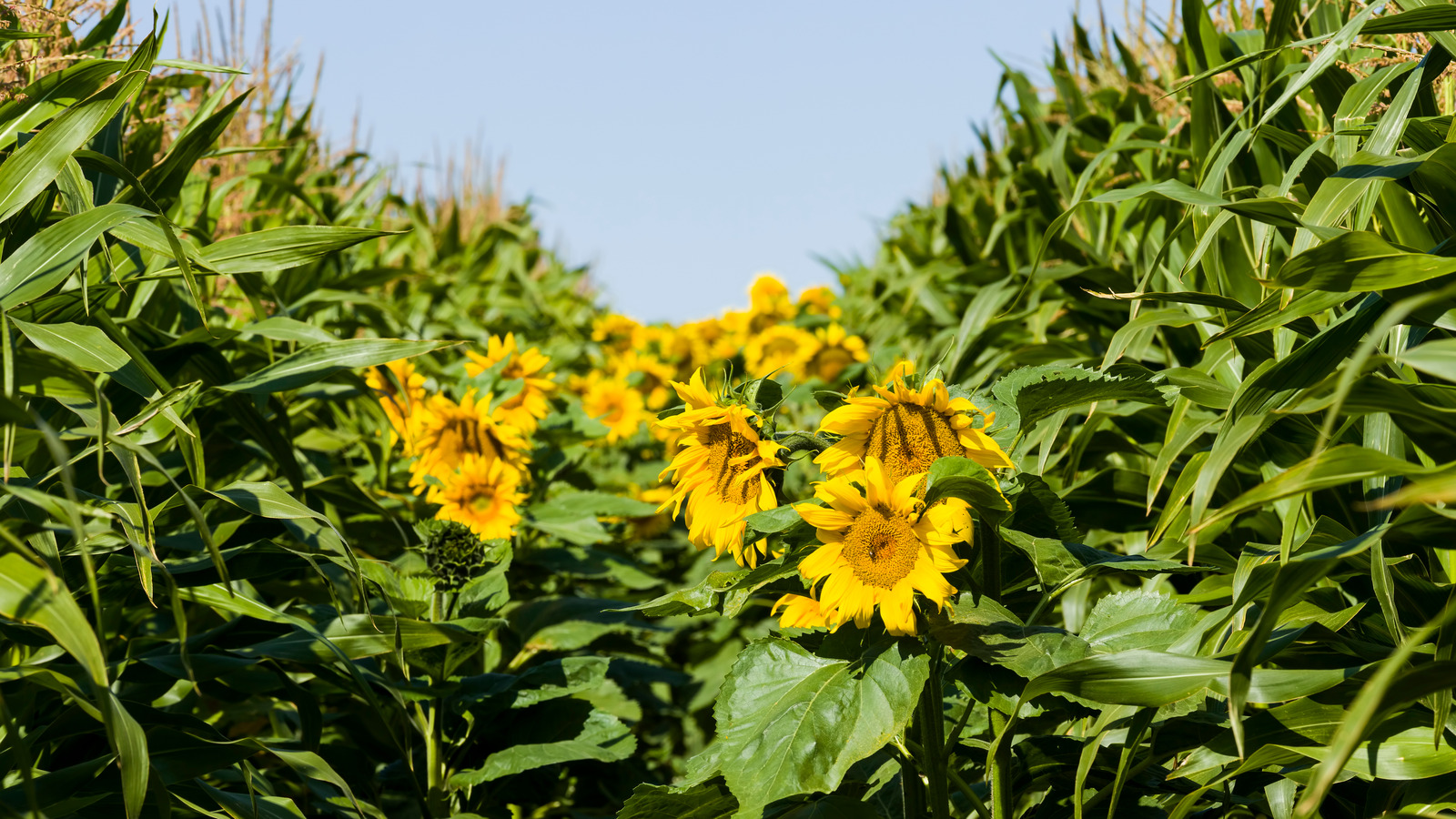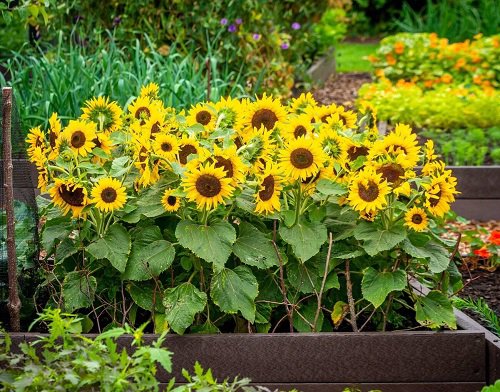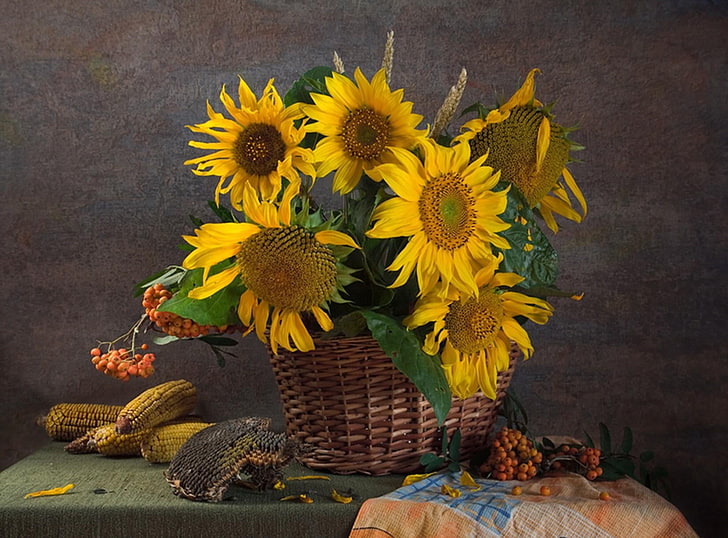Sunflowers And Corn: The Perfect Companion Planting
Sunflowers and Corn: The Perfect Companion Planting
Sunflowers and corn are two of the most popular garden plants, and for good reason. They're both beautiful, easy to grow, and produce delicious food. But did you know that they're also great companion plants?
That's right, sunflowers and corn can actually help each other thrive. Here's how:
- Sunflowers attract beneficial insects. Sunflowers are magnets for ladybugs, lacewings, and other beneficial insects that help to control pests like aphids, spider mites, and whiteflies. These insects are especially important for corn, which is a susceptible crop to pests.
- Sunflowers provide shade for corn. Corn is a heat-loving crop, but it can be susceptible to heat stress in hot, sunny climates. Sunflowers can help to provide shade for corn, which can help to protect it from heat stress and improve its yields.
- Sunflowers help to improve the soil. Sunflowers have deep roots that help to break up compacted soil and improve drainage. This can be beneficial for corn, which prefers well-drained soil.
- Sunflowers produce chemicals that deter pests. Sunflowers produce a chemical called cucurbitacin, which has insecticidal properties. This chemical can help to deter pests like corn borers and earworms.
In addition to these benefits, sunflowers and corn also look great together in the garden. The tall, stately sunflowers provide a beautiful backdrop for the corn, and the two plants complement each other's colors.
If you're looking for a way to improve your garden's productivity and beauty, consider planting sunflowers and corn together. You won't be disappointed.
Sunflowers and corn are two popular garden plants that can benefit from being grown together. Sunflowers attract beneficial insects that help to control pests, and they also help to shade the corn from the hot afternoon sun. Corn, in turn, provides support for the sunflowers to grow tall.
If you are interested in learning more about sunflower and corn companion planting, please visit Garden Wiki. This website has a wealth of information about companion planting, including specific tips for growing sunflowers and corn together.
FAQ of sunflower and corn companion planting
Q: Can I plant sunflowers next to corn?
A: Yes, sunflowers and corn are compatible companion plants. They both have similar growing requirements, such as full sun and well-drained soil. Sunflowers can also help to shade corn from the hot afternoon sun, which can help to prevent the corn from developing leaf scorch.
Q: What are the benefits of companion planting sunflowers and corn?
A: There are several benefits to companion planting sunflowers and corn. Sunflowers can help to attract pollinators, which are essential for corn pollination. They can also help to deter pests, such as corn earworms. Additionally, sunflowers can help to improve the soil by adding nitrogen and other nutrients.
Q: What are some other good companion plants for sunflowers and corn?
A: Some other good companion plants for sunflowers and corn include:
- Beans
- Borage
- Cucumbers
- Dill
- Marigolds
- Melons
- Mint
- Nasturtiums
- Pole beans
- Pumpkins
Q: What are some plants that should not be planted near sunflowers and corn?
A: Some plants that should not be planted near sunflowers and corn include:
- Potatoes
- Tomatoes
- Eggplants
- Peppers
Q: How far apart should sunflowers and corn be planted?
A: Sunflowers and corn should be planted about 18-24 inches apart. This will give them enough space to grow and thrive.
Q: When should I plant sunflowers and corn?
A: Sunflowers and corn can be planted in the spring, after the last frost. However, it is important to check the planting dates for your specific area.
Q: How do I care for sunflowers and corn?
A: Sunflowers and corn need full sun and well-drained soil. They should be watered regularly, especially during hot, dry weather. You may also need to fertilize them once or twice during the growing season.
Image of sunflower and corn companion planting
- Sunflowers and corn growing together in a field. The sunflowers are tall and the corn is shorter, so they complement each other well. The sunflowers also help to attract pollinators, which can help to improve the pollination of the corn.

- A close-up of sunflowers and corn growing together. The sunflowers are in full bloom and the corn is starting to tassel. The leaves of the sunflowers help to shade the soil, which can help to keep it cool and moist.

- A row of sunflowers and corn plants. The sunflowers are planted in front of the corn, which helps to protect the corn from the wind. The sunflowers also help to attract beneficial insects, which can help to control pests.

- A garden bed with sunflowers and corn plants. The sunflowers are planted in the back of the garden bed and the corn is planted in the front. The sunflowers help to attract pollinators, which can help to improve the pollination of the corn.

- A sunflower and corn border. The sunflowers are planted along the edge of a garden bed and the corn is planted behind them. The sunflowers help to attract pollinators and the corn provides privacy.

- A sunflower and corn trellis. The sunflowers are planted at the base of a trellis and the corn is trained to grow up the trellis. The sunflowers help to shade the corn and the corn provides support for the sunflowers.

- A sunflower and corn maze. The sunflowers and corn are planted in a maze shape. The maze is a fun way to get exercise and it also attracts pollinators.

- A sunflower and corn wreath. The sunflowers and corn are dried and then arranged into a wreath. The wreath is a beautiful way to decorate your home or to give as a gift.

- A sunflower and corn table centerpiece. The sunflowers and corn are arranged in a vase on a table. The centerpiece is a beautiful way to decorate your table for a special occasion.

- A sunflower and corn cake. The sunflowers and corn are made out of icing on a cake. The cake is a delicious and beautiful way to celebrate a special occasion.
Post a Comment for "Sunflowers And Corn: The Perfect Companion Planting"